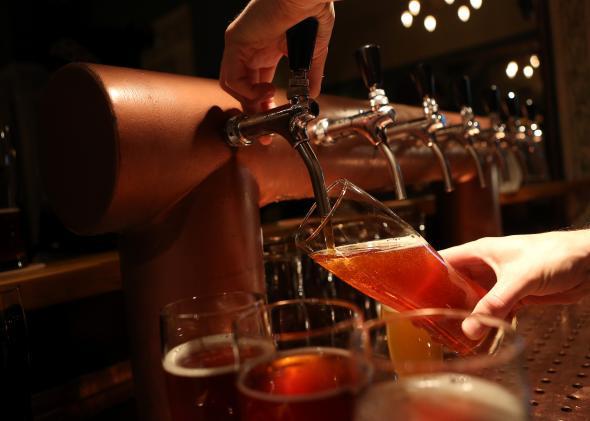America’s craft breweries are thirsty for a lot more market share. By 2020, the trade association representing small and independent brewers in the U.S. says, its members will satisfy 20 percent of the country’s beer consumption. That’s quite a bit when you consider that in 2014 beer giant Anheuser-Busch (which includes Budweiser, Rolling Rock, Corona, Stella Artois, and other brands) made up an estimated 45 percent of the U.S. market and MillerCoors another 25 percent or so. But according to the Brewers Association, craft beer might already be more than halfway there—in 2014, its market share flowed into the double digits (at 22.2 million barrels, or 11 percent of volume) for the first time.
Now, it’s worth taking these numbers with a grain of salt (or a helping of hops?). The Brewers Association, after all, surely is inclined to release data that trumpet the craft-beer renaissance and make its march toward a 20 percent market share look like a foregone conclusion. Estimates from Beer Marketer’s Insights, an industry research group and publication, are more conservative, putting craft beer’s volume share closer to 8.9 percent in 2014. That comes down to methodology: The Brewers Association, for example, began counting Yuengling among craft brews as of last year while Beer Marketer’s Insights does not. The Brewers Association also limits its total market to what we’d probably traditionally think of as beer; Beer Marketer’s Insights includes flavored malt beverages and hard cider in its totals.
But numbers-parsing aside, the point everyone agrees on is that craft beer is popular, growing fast, and unlikely to slow down any time soon. The Brewers Association put craft beer’s 22.2 million barrels in 2014 at an 18 percent increase in volume and a 22 percent increase in sales over the previous year. The overall beer market, by contrast, inched up a mere 0.5 percent in 2014, the Brewers Association’s chief economist, Bart Watson, said in a release. “Really no matter how you count it, the growth has continued to impress and to, in some respects, accelerate,” says Chris Shepard, assistant editor at Beer Marketer’s Insights. “There’s been very few signs that it’s slowing down whatsoever.”
As my colleague Jordan Weissmann has noted on several occasions, the rapid rise of craft beer has left a stalwart like Budweiser in the unenviable position of being “a beer without a purpose.” Budweiser is much too big to go anywhere—in 2014, it shipped 96 million barrels. But it’s also struggling to appeal to younger consumers, leaving it increasingly reliant on an aging customer base. In November, the Wall Street Journal made the stunning observation that Americans had started drinking more craft beer than Budweiser. It would be a stretch to call this latest news the death knell for big brewers. But if you’re Bud, it can’t be very reassuring, either.
